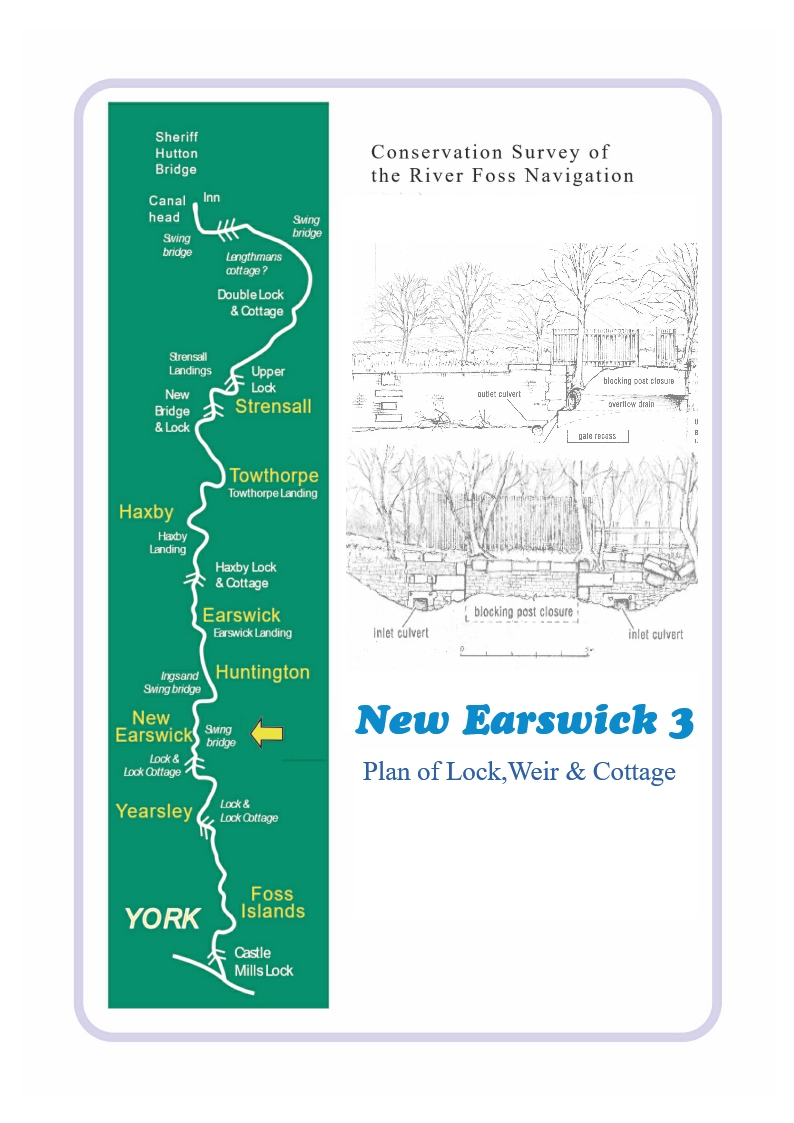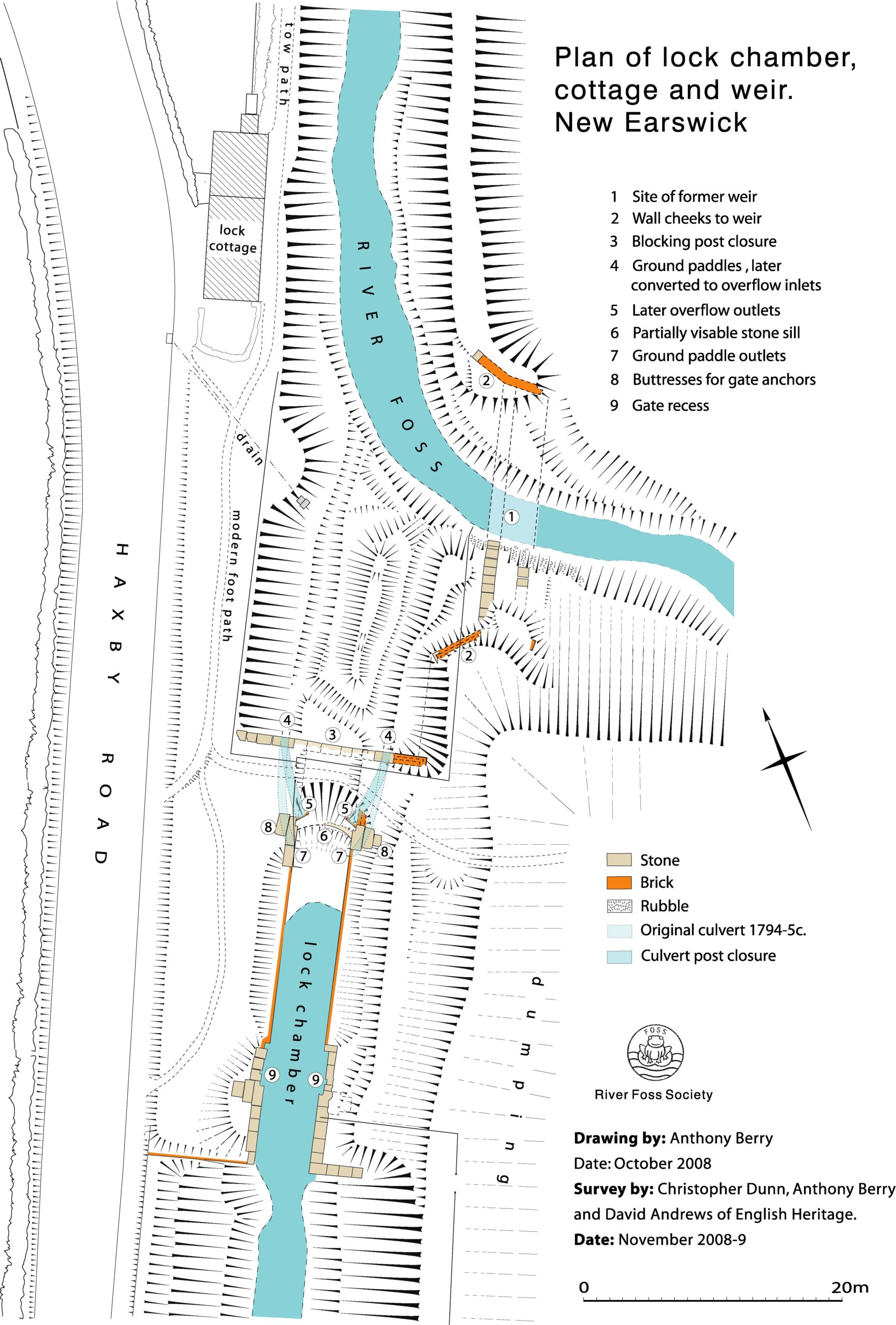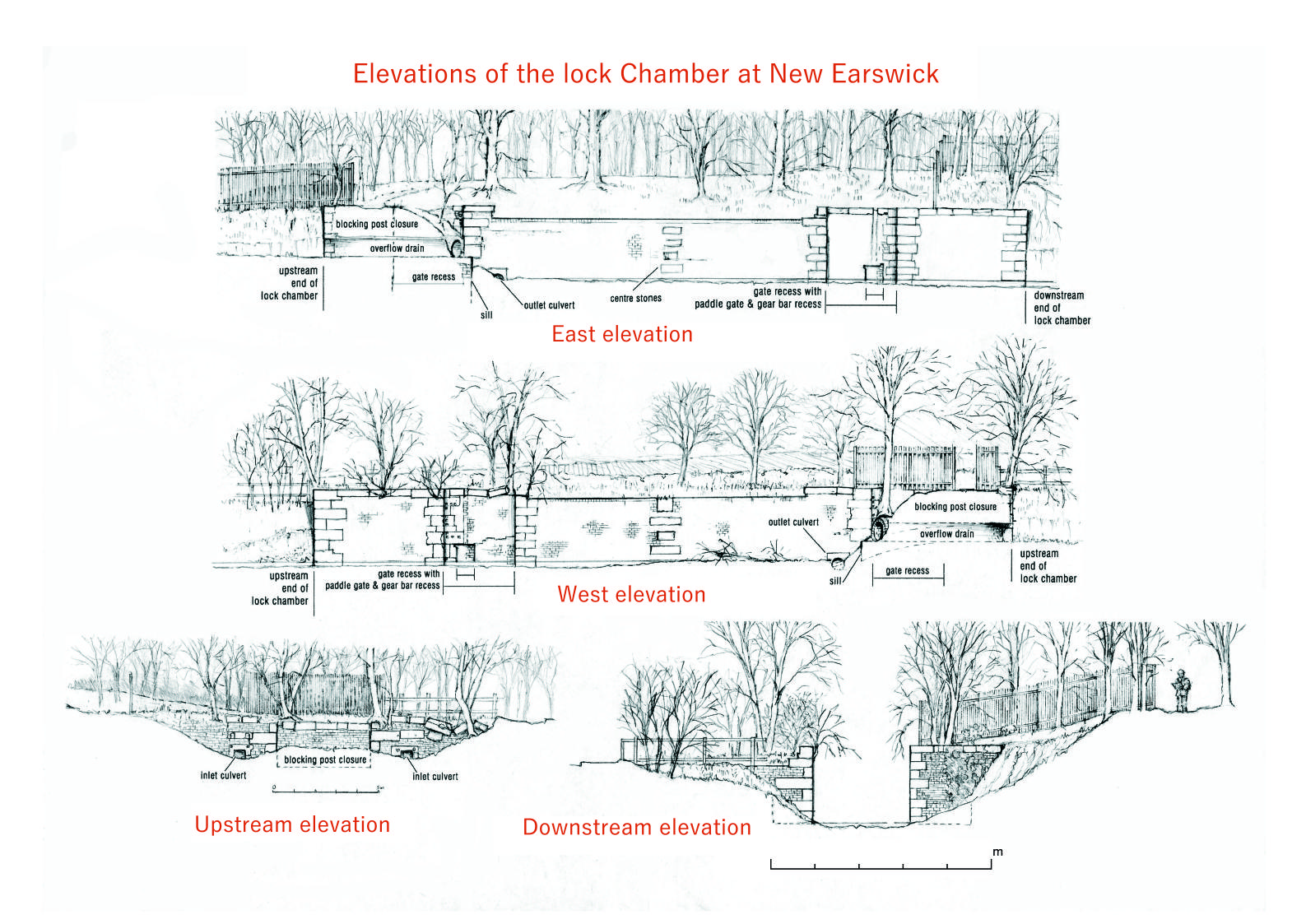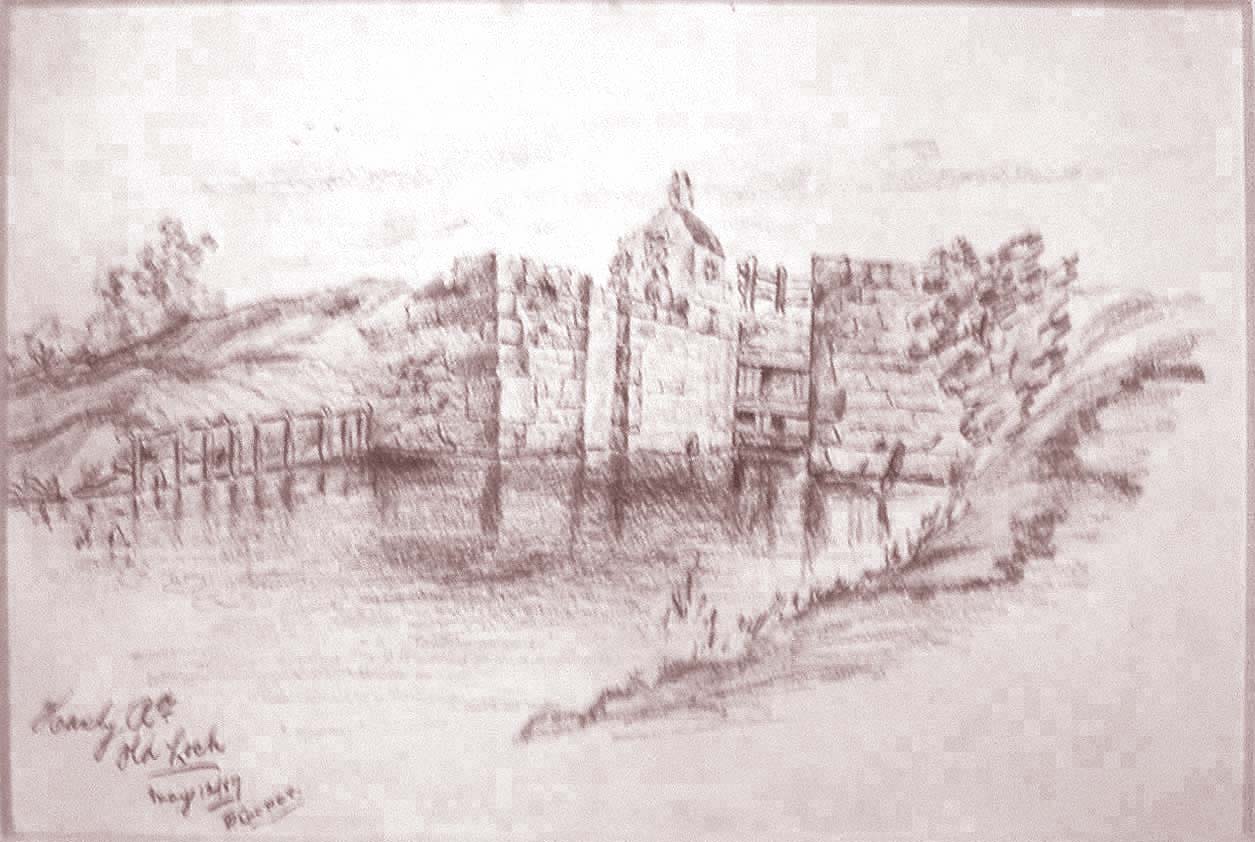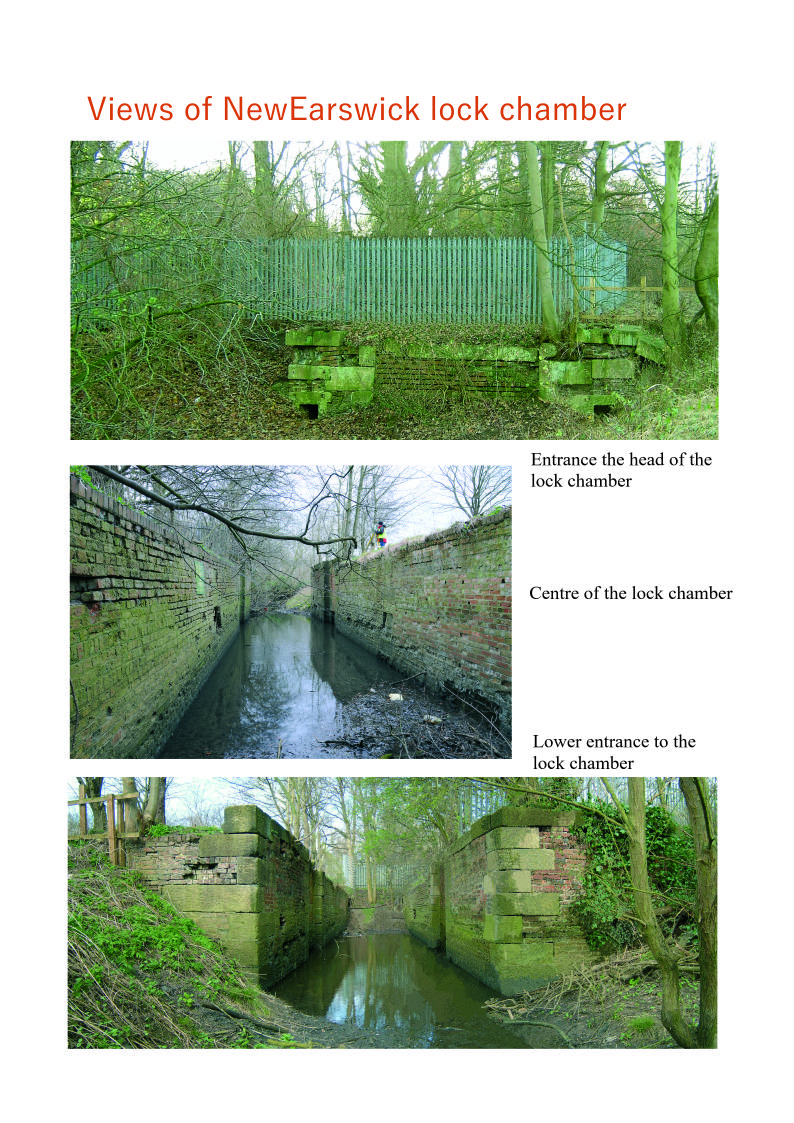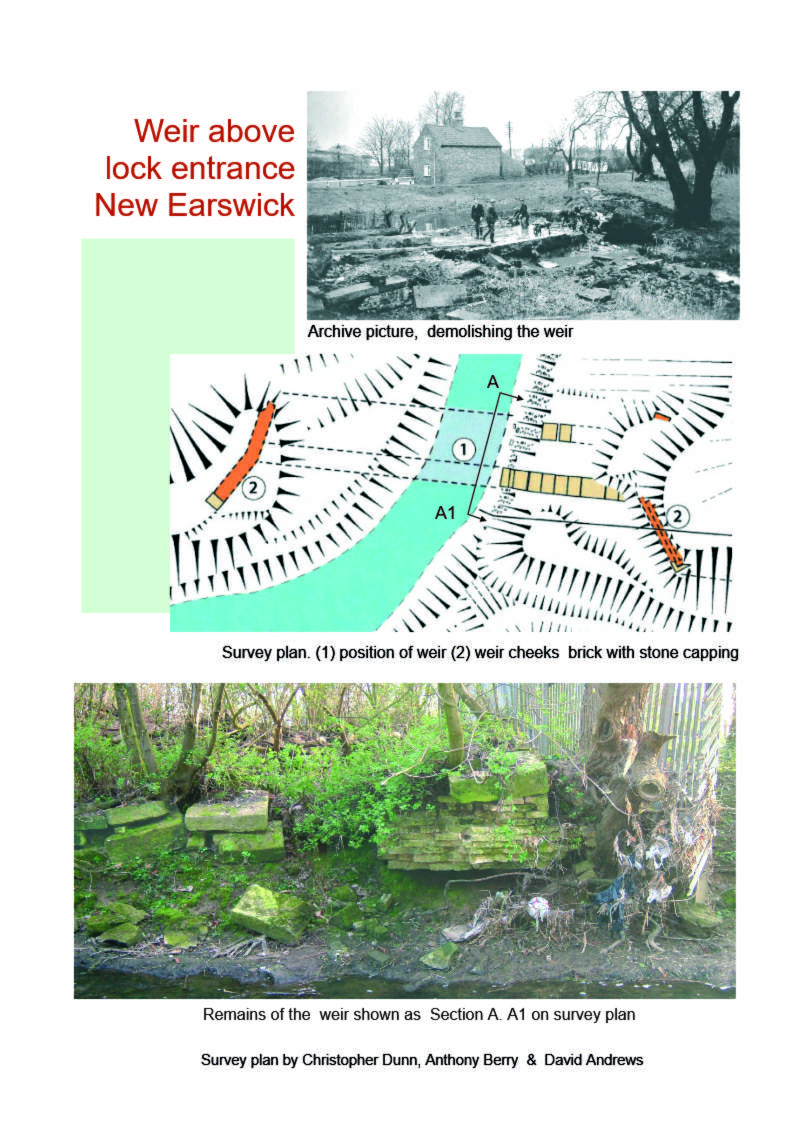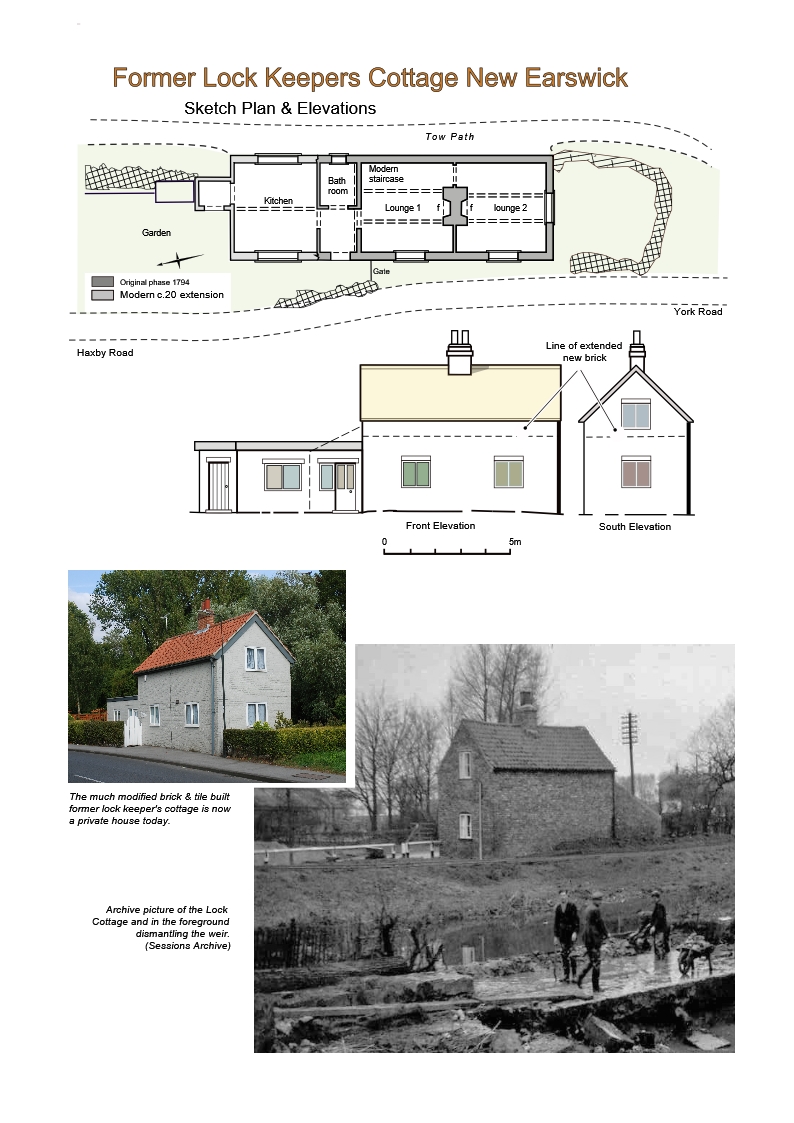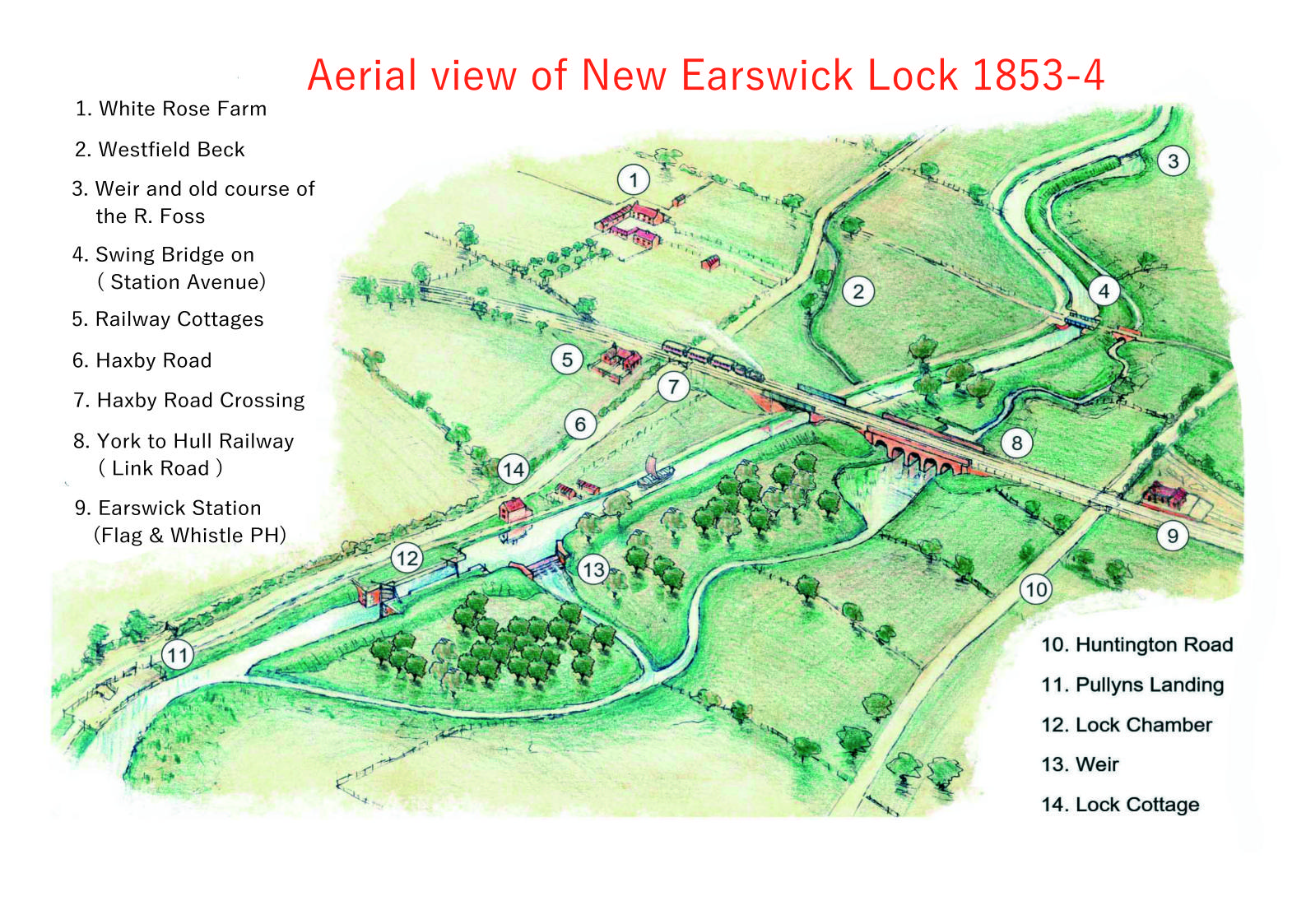The Foss Navigation
Ways of improving the Foss and the smelly swamp it had become as it passed by York had been considered for many years. The eventual application for an act of parliament started with a meeting held in July 1791 to consider the river’s flooding problems. The promoters, mainly interested in its drainage, originally decided to include in their scheme a. navigation only as far as Sheriff Hutton ‘at a moderate expense’, to carry coal and road materials. They engaged well-known canal builder William Jessop to survey a possible route.
He reported back that drainage would be improved by widening the narrow and crooked river., which benefits alone, he thought, would make economic sense, but in addition a fair trade might be expected from a navigation.
This led in 1795 to an act of parliament for a broad waterway to take keels of about 58ft x 14ft 6in, with a reservoir on Oulston Moor north-east of Easingwold, unusual on a river navigation. The total cost was estimated at £24,685.
Jessop probably did the lay-out of the line, but then, after specifying some reservoir fittings, his name disappears from the records. Unfortunately for the company at that canal mania time good engineers were hard to find. An advertisement for a superintendent of works was taken on by a John Moon who was so self-confident, that although the job required the navigation to be built ‘according to a Section of the intended Canal by Mr. Jessop’, he proceeded radically to alter Jessop’s line and proposals.
Work began in 1795 at the York end, with some tolls being taken by November, though Castle Mills lock, where it joined the Ouse, was still being built. A year later, the navigation was opened for 1¼ miles to Monkbridge when a large vessel laden with coals belonging to Mr Mark Hesp, coal and lime merchants in York, passed through amidst the acclamations of a great concourse of spectators, and preceded to Monk Bridge to deliver her cargo. It also removed a collection of putrid and stagnant water that was daily becoming more offensive, and “Promises to be of great public utility”. Moon was told to ‘treat the Workmen upon the Canal in such Manner as appears to him proper, not exceeding the Sum of Ten Pounds’.
Thus far Moon had been considered to be doing a good job, having been given a rise in August 1794. But by mid 1795, with the line probably open to Haxby, staked out to Strensall and being staked to Sheriff Hutton, the committee got nervous at the way money was going, and called in John Rennie.
His report of 30 November was severe. In sum. He said “Through-out the whole of the Work, very little attention indeed has been paid to Mr. Jessop’s original design, by which not only many thousand Pounds have been thrown away, but the work rendered much less secure. If Jessop’s advice had been followed, the navigation might by now have been open to above Sheriff Hutton. As it was, there was not enough money to finish it to Strensall”. Moon was at once told to work to the plan that Rennie had recommended, and six months later was dismissed.
[Does this remind you of any recent capital projects…….?]William Scruton, who replaced Moon, completed the two Oulston Moor reservoirs and the line to Strensall, originally intending to build four locks in two staircase parts, one above and one below the village. In fact, two separate locks were built below Strensall, and there for the time the navigation ended, having cost over, £25,000 equal to the original estimate for the whole scheme.
Writing at the time, John Tuke said that “The main Upwards traffic was coal and lime; Downwards grain, butter and bacon, and perhaps hereafter timber and stone for roads”.
So, for a time work paused, the shareholders unable to pay interest on the £5,000+ they owed and refusing even to come to meetings. One can hardly blame them; receipts for 1799 were £287, for 1800, £580.
On 1 March 1802 the committee were granted another act allowing them to raise the money needed to start the extension. Jessop had considered a cut necessary above Strensall, presumably because the river was too small, but his plan had followed the river line. Scruton seems to have suggested modifying this by taking a cut from above Strensall straight to Sheriff Hutton Bridge. The extension was open by about end of June 1804, though some work remained to be done. The line was now 11½ miles long with 8 locks: it had cost about £55,000. The shareholders sadly calculated the profits would not pay 4 per cent, and in May 1805 raised tolls by two-thirds.
And then controversy began. In July 1808 a shareholders meeting, strong in Stillington supporters, decided against paying a first dividend and in favour of abstinence until the navigation had been completed.
Trade improved in the first few years after the opening of the line to Sheriff Hutton, toll revenue reached £1,585 in 1809, the highest figure achieved. Then it fell away, seemingly because of competition from the Ouse and the Derwent above York, plus improvement to the local roads.
Dividends roughly reflect the fortunes of the navigation;
Year Dividends per £115 share Years Dividends per £115 share
£ £
1809-11* 4.50 1833-35 2.66
1812-14 5.00 1836-38 5.55
1815-17 2.66 1859-41 5.16
1818-20 5.55 1842-44 5.00
1821-23 2.00 1845-47 1.66
1824-26 1.66 1848-50 0.55
1827-29 2.50 1851 0.50
1830-32 1.00
These figures were due mainly to business being good at the York end, though most of it was short-haul.
The opening of the York and North Midland’s Scarborough railway on 7th July 1845 made the Foss’s position hopeless. The state of the river was now, again, a cause of concern, since it received “in its Course the Sewage of a Portion of the City of York, which was not carried off, but retained in the river”, most of it having been put there as a result of the city’s Improvement Commissioners actions between 1825 and 1850.
A proposal to buy the navigation came before York Corporation that year, but was not supported by the Finance Committee, and was dropped.
Early in 1848 the navigation company commissioned a report on the problem, and in October, at the corporation’s request, called a meeting to discuss the “best plan to be adopted for cleansing the Canal and for aiding in the Sanitary arrangements of the City”. After it they did try to stop some of the pollution, notably coming from the workhouse, the general hospital and the gasworks. Galvanized, they also proceeded to dredge its whole length up to Sheriff Hutton Bridge to restore full depth, and, unsuccessfully, tried to re-let the tolls, which had reverted to them in 1845.
In July 1851 they paid what was to be their last dividend of 10s. per £115 share, and then in August received an offer to purchase from York corporation. The city council had already decided that the navigation above the lower urban stretch was ‘not justified on economical, sanitary or commercial grounds’ and in 1859 they obtained an Act to abandon all but a mile and a quarter from the Ouse, with one lock only, Castle Mills.
In 1887 a Foss Navigation Committee was set up, followed by an agreement reached with Henry Leetham and Sons, the flour millers. The city offered especially favourable tolls, and also agreed to improve the river up to Hungate mills to give a navigable draught of 7 ft 6 in, and to rebuild Castle Mills lock to take craft 97ft x 18ft 6in, carrying up to 250 tons. This was opened in July 1889 at a cost of £7,460, plant being also being installed to pump water back past the lock so that it could operate whatever the river water level. By 1898 tolls had risen from £294 in 1865 to £750, in which year 166,550 tons passed on the river: in 1905 it had risen to £94.142.
The navigation above Layerthorpe gradually fell into ruin, with weirs and other structures being removed piecemeal as minor “improvements” to the river’s flow. Water levels were generally lowered throughout. The banks were reprofiled in places, and bits were straightened from time to time. The ‘new’ cut above Strensall was abandoned and silted up, though its line can still be seen in places.
